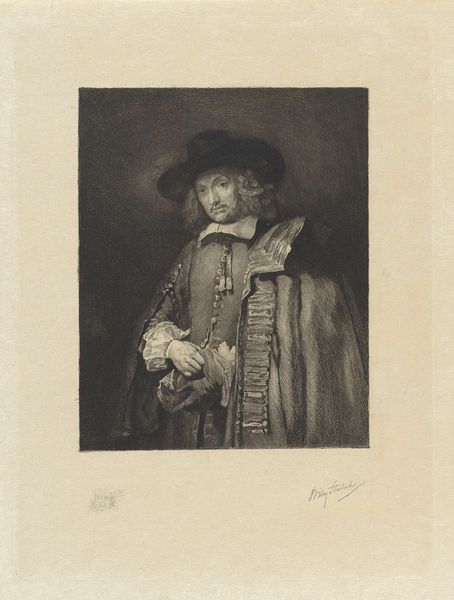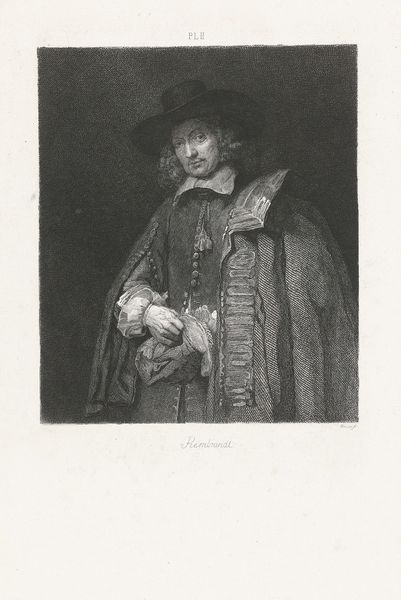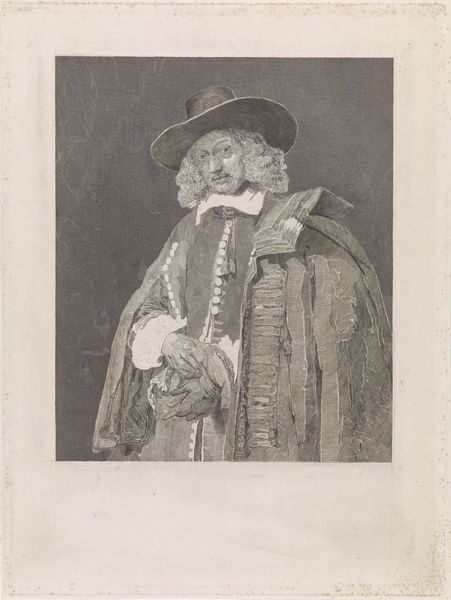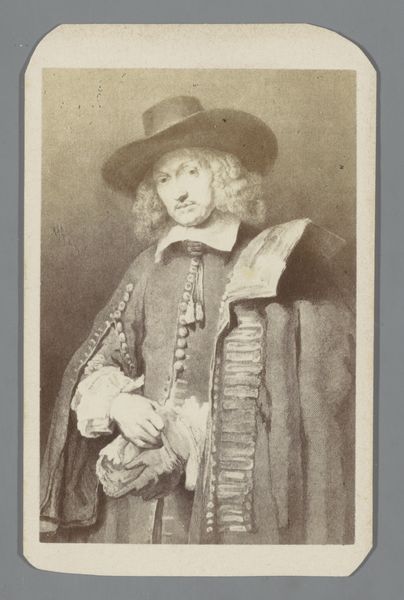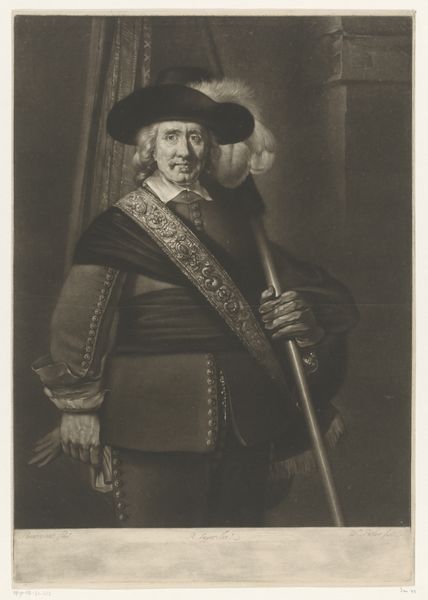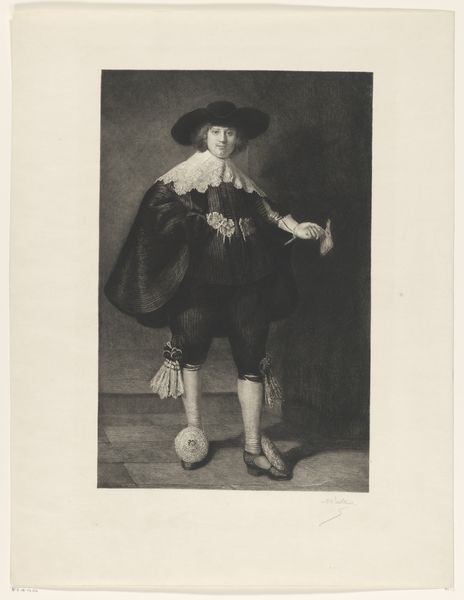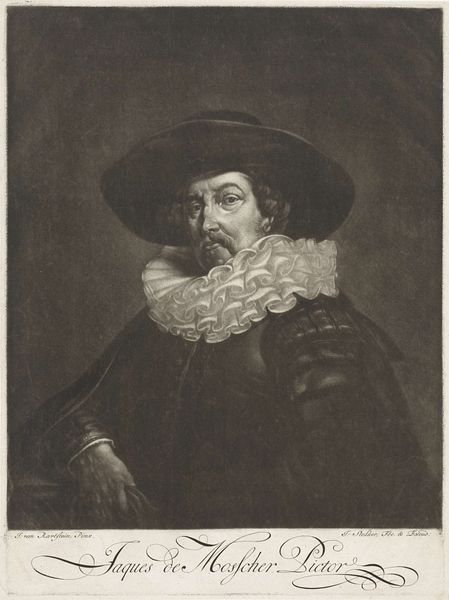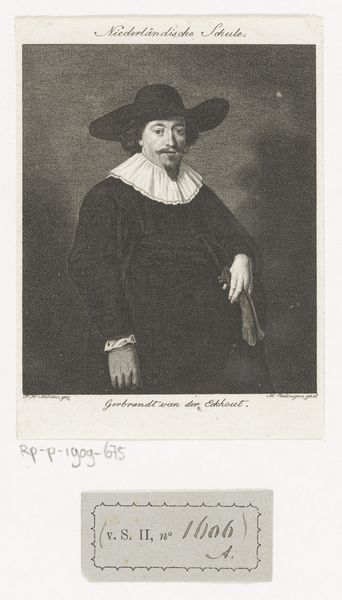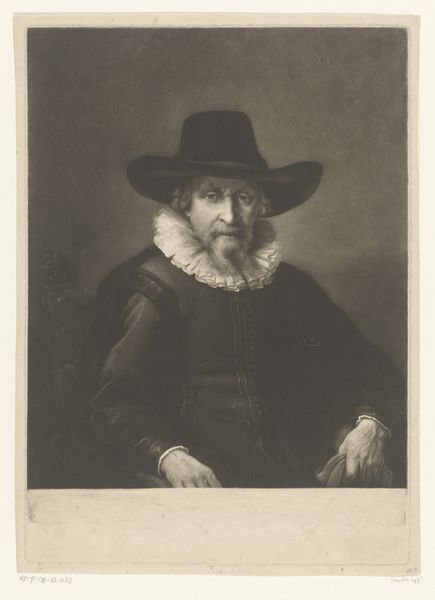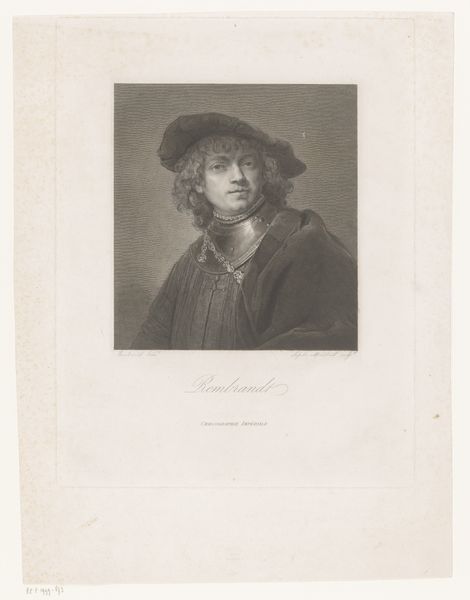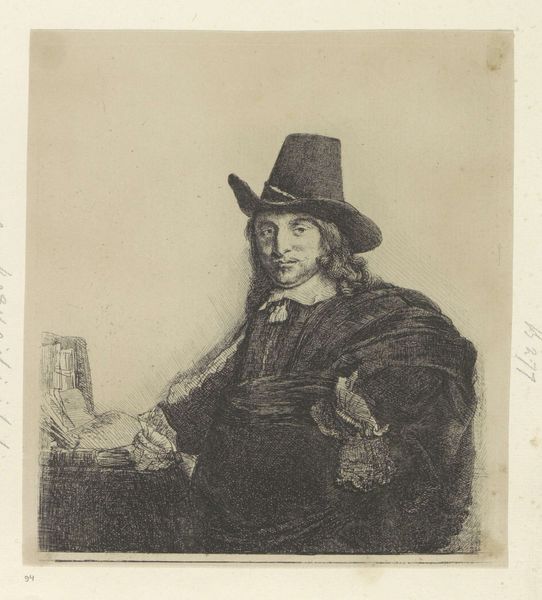
Dimensions: height 451 mm, width 332 mm
Copyright: Rijks Museum: Open Domain
Curator: It’s hard to ignore the immediate sense of melancholy in this image, wouldn't you agree? The subdued lighting and the sitter's somewhat downcast gaze certainly contribute to that feeling. Editor: Absolutely. "Portret van Jan Six," rendered as an etching sometime between 1823 and 1853 by Johann Wilhelm Kaiser, uses shadow so effectively to create that mood. I think what you are picking up on as melancholy is partly the social conventions around portraiture at the time, and partially its function to idealize Six in representation, for posterity. Curator: Conventions are vital of course. The wide-brimmed hat and elaborate cape are clear signifiers of status. The cape itself almost engulfs the figure, acting as a visual representation of Jan Six's public persona, but then you notice how delicately he’s holding what appears to be gloves. A softer more subtle sign. Editor: Exactly. Kaiser created this image of Jan Six posthumously; he was long gone when the etching was completed, so he may have also wanted to portray this public man, someone influential in the Golden Age, as accessible. Kaiser worked, after all, to establish museums in Amsterdam. Curator: The gloves, the soft curl of his hair, all humanize him and perhaps speak to something beyond his influence. Look closer and there are countless fine lines suggesting both his wealth but also inner thoughts and fleeting expression. Editor: Indeed, those minute details pull the viewer in. It makes one consider the role this type of academic art played, especially at that moment. Etchings such as this spread the image and fame of elite individuals and cultural heroes among the growing middle classes and, because it hangs here in the Rijksmuseum, its cultural role perpetuates. Curator: Museums give them a stage but artworks like this carry complex codes embedded with cultural and personal meaning, almost frozen in time but waiting to be unlocked by each new viewer. Editor: Yes, and even in reproductive media, those complex meanings reflect not just the sitter, but the time it was made in, and how institutions reflect on history today.
Comments
No comments
Be the first to comment and join the conversation on the ultimate creative platform.
